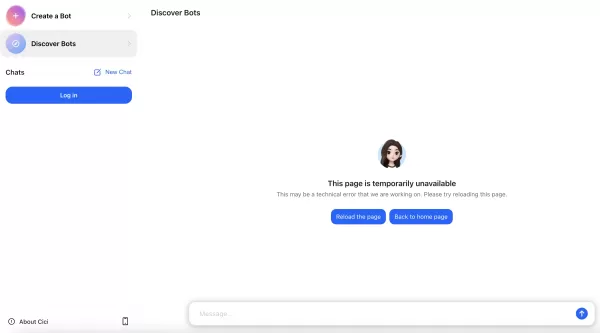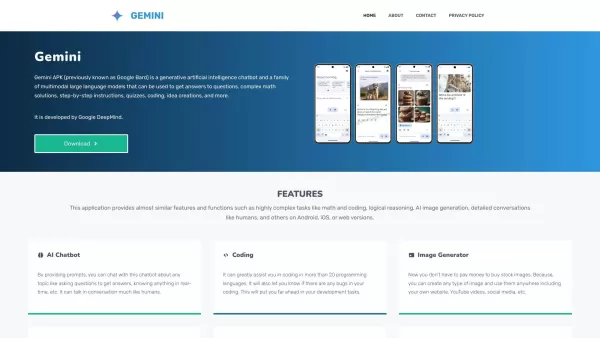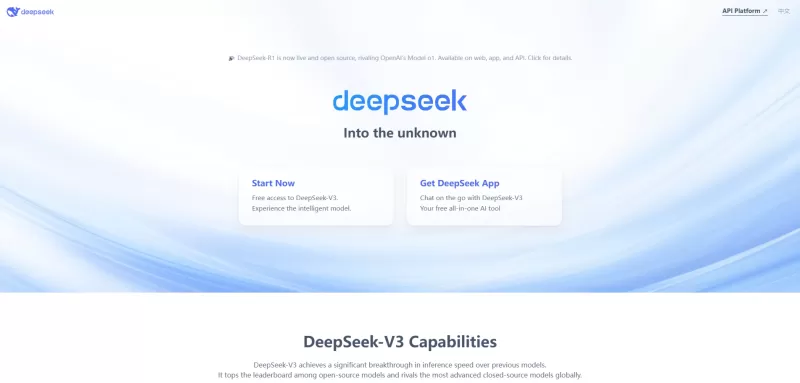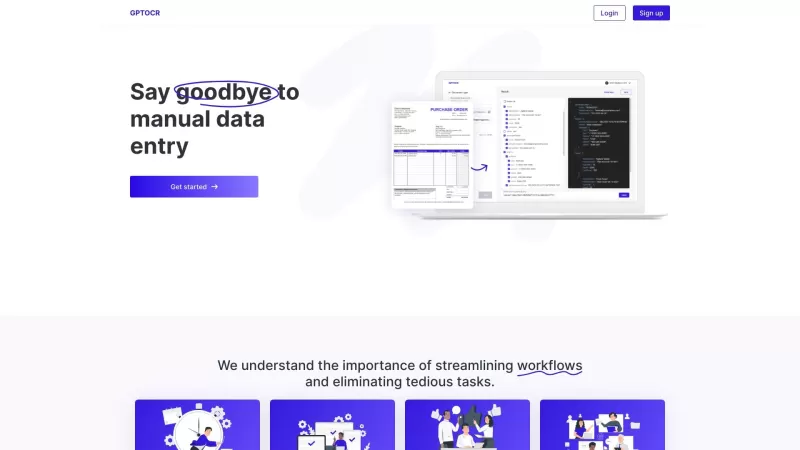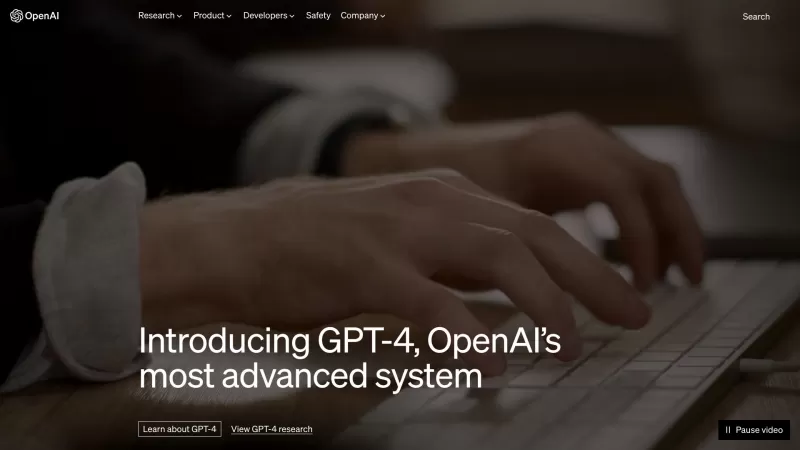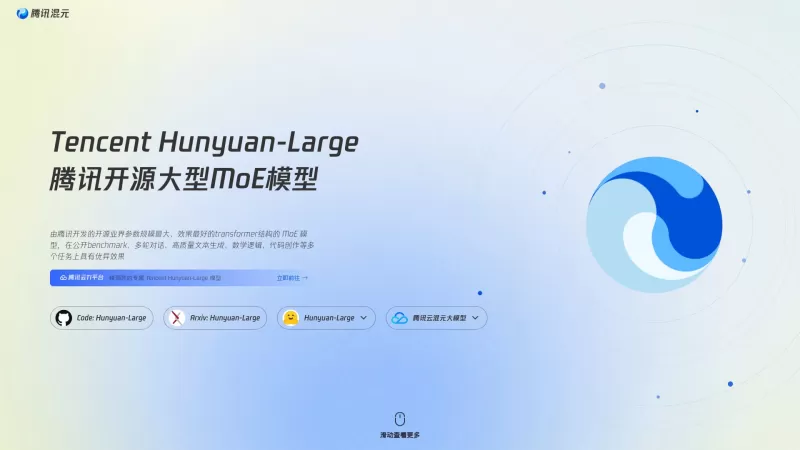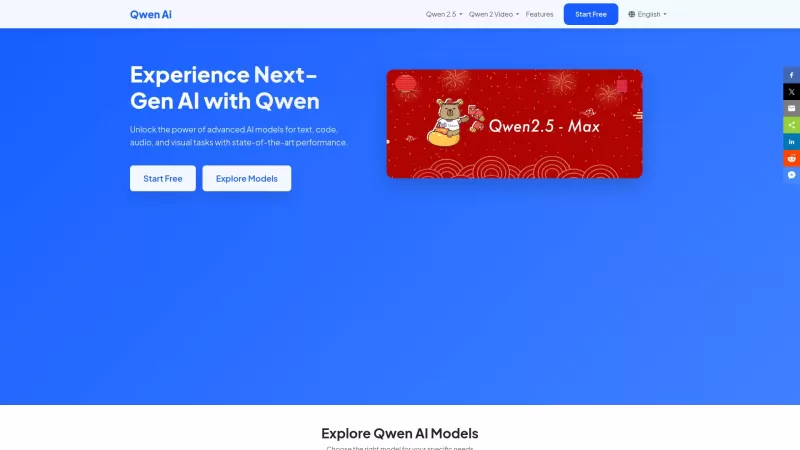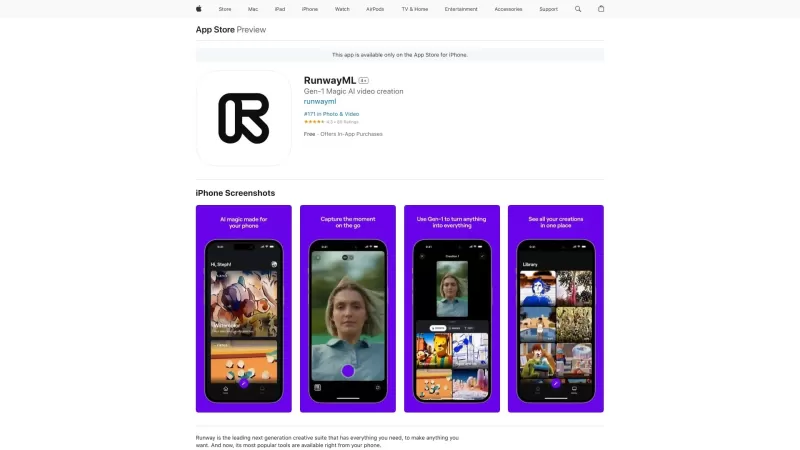Vanna AI Enables No-Code Database Queries Using Natural Language Processing
The emergence of natural language database interfaces marks a transformative shift in data democratization, with Vanna AI pioneering this evolution. This open-source Python library bridges the gap between business users and complex data systems by converting conversational English into accurate SQL queries. Through its innovative Retrieval-Augmented Generation (RAG) architecture, Vanna empowers organizations to unlock insights without specialized technical knowledge while maintaining query precision.
Key Advantages
Vanna AI delivers an intuitive English-to-SQL interface that simplifies data exploration
The RAG architecture ensures contextually accurate query generation through semantic understanding
Complete open-source implementation enables deep customization for enterprise needs
Broad SQL database compatibility including PostgreSQL, MySQL and SQLite
Seamless integration with Python data workflows and Jupyter environments
Active open-source development with growing community adoption
Reduces technical barriers to data access across organizations
Core Technology Overview
Architectural Foundations
Vanna AI combines cutting-edge natural language processing with database intelligence through a sophisticated two-phase approach. The system first learns your data environment by analyzing schema structures and existing queries through vector embeddings. When users pose business questions, the platform performs semantic searches against this knowledge base before generating optimized SQL statements tuned to your specific data landscape.
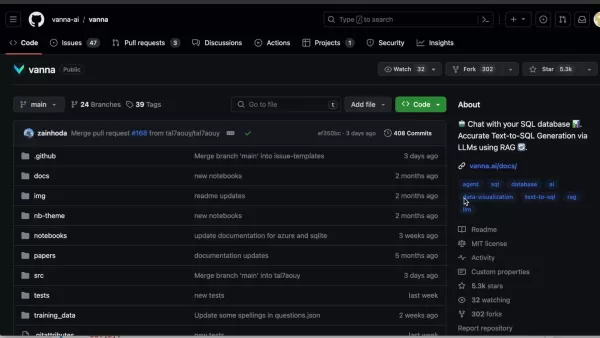
This dual-phase methodology ensures queries respect database relationships and business rules while answering user intent. The open architecture allows integration with existing Python data stacks, with particular strength in analytical workflows through Jupyter notebook compatibility.
Key Technical Components
Vanna AI implements several innovative technologies to achieve its natural language interface:
- Embedding Models: Convert database metadata and natural language into comparable vector representations
- Vector Database: Stores and retrieves contextual information for query generation
- Language Models: Transform questions into executable SQL based on retrieved context
- Query Validation: Ensures generated SQL conforms to database syntax rules
- Feedback Loop: Continuous improvement through successful query reinforcement
Implementation Guide
Installation Process
Getting started requires straightforward Python package installation via pip command:
pip install vanna
This handles all dependencies including required machine learning libraries and database connectors. Enterprise deployments may consider containerized installation for production scaling.
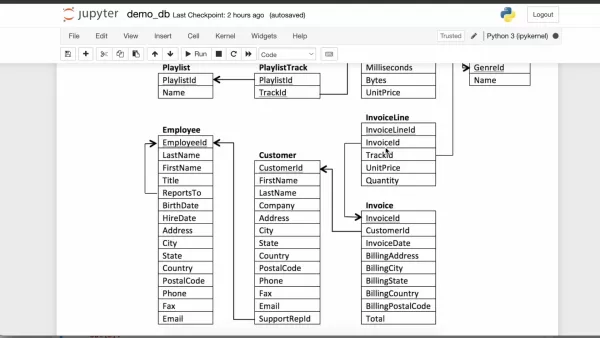
System Configuration
Connection to existing databases uses standard SQLAlchemy connection strings:
import pandas as pd
from sqlalchemy import create_engine
from vanna.remote import VannaDefault
vn = VannaDefault(model='chinook', api_key='YOUR_API_KEY')
vn.connect_to_sqlite('https://vanna.ai/Chinook.sqlite')
Knowledge Base Development
Training Vanna AI involves providing:
- Complete database schema descriptions
- Sample queries representing common use cases
- Business terminology definitions
- Data relationship documentation
This structured onboarding typically requires one-time effort from database administrators before end-user access.
Economic Considerations
Cost Structure Analysis
As open-source software, Vanna AI eliminates licensing costs while offering full transparency. Organizations should budget for:
- Implementation services for complex deployments
- Computing resources for embedding generation
- Vector database infrastructure
- Optional premium support packages
The total cost of ownership often proves significantly lower than commercial alternatives while providing greater control.
Solution Evaluation
Key Benefits
- Democratizes data access across technical skill levels
- Reduces dependency on specialized SQL resources
- Accelerates analytics workflow velocity
- Enables self-service reporting capabilities
- Facilitates exploratory data analysis
Implementation Challenges
- Requires initial schema understanding period
- Complex analytical questions may need refinement
- Performance varies by database complexity
- New features under active development
Industrial Applications
Business Intelligence
Sales teams can instantly query customer metrics without IT involvement, while executives gain real-time access to performance dashboards through natural questions:
"Show me quarterly revenue trends by product line for the Western region"
Data Science
Analysts accelerate feature engineering by conversationally exploring datasets before model development:
"What's the distribution of transaction amounts exceeding $1000?"
Operational Reporting
Managers automate report generation through saved natural language queries that refresh with current data.
Common Questions
Database Compatibility
Vanna AI supports all major SQL implementations including cloud data warehouses with JDBC/ODBC connectivity. Performance varies based on database-specific syntax nuances.
Accuracy Benchmarks
Testing shows 85-95% initial accuracy for common business queries, improving to 95%+ after feedback training with organization-specific questions.
Security Considerations
Queries respect existing database permissions. Sensitive data protection requires proper schema design and access controls implementation.
Comparative Analysis
Alternative Solutions
Unlike proprietary tools like Tableau Ask Data, Vanna AI offers complete query transparency and customization. The open approach allows tuning for industry-specific terminology and complex analytical scenarios beyond basic visualization needs.
Related article
 Google Expands NotebookLM AI Access to Students Under 18
Google has unveiled significant upgrades to its Classroom platform, introducing free Gemini AI tools for educators and expanding access to NotebookLM for students under 18—marking the first availability of these tools for younger users.Educators usin
Google Expands NotebookLM AI Access to Students Under 18
Google has unveiled significant upgrades to its Classroom platform, introducing free Gemini AI tools for educators and expanding access to NotebookLM for students under 18—marking the first availability of these tools for younger users.Educators usin
 ServiceNow Launches Unified AI to Simplify Enterprise Complexity
ServiceNow kicks off Knowledge 2025 by unveiling its groundbreaking AI platform—a unified solution engineered to harmonize disparate AI tools and digital assistants across enterprise environments. By forging strategic alliances with NVIDIA, Microsoft
ServiceNow Launches Unified AI to Simplify Enterprise Complexity
ServiceNow kicks off Knowledge 2025 by unveiling its groundbreaking AI platform—a unified solution engineered to harmonize disparate AI tools and digital assistants across enterprise environments. By forging strategic alliances with NVIDIA, Microsoft
 US Pushes for Nvidia to Reduce AI Chip Sales to China
Recent reports from The New York Times and The Financial Times reveal that the Trump administration has mandated Nvidia and AMD allocate 15% of their AI chip sales revenue from China to federal coffers. This unprecedented arrangement reportedly follo
Comments (0)
0/200
US Pushes for Nvidia to Reduce AI Chip Sales to China
Recent reports from The New York Times and The Financial Times reveal that the Trump administration has mandated Nvidia and AMD allocate 15% of their AI chip sales revenue from China to federal coffers. This unprecedented arrangement reportedly follo
Comments (0)
0/200
The emergence of natural language database interfaces marks a transformative shift in data democratization, with Vanna AI pioneering this evolution. This open-source Python library bridges the gap between business users and complex data systems by converting conversational English into accurate SQL queries. Through its innovative Retrieval-Augmented Generation (RAG) architecture, Vanna empowers organizations to unlock insights without specialized technical knowledge while maintaining query precision.
Key Advantages
Vanna AI delivers an intuitive English-to-SQL interface that simplifies data exploration
The RAG architecture ensures contextually accurate query generation through semantic understanding
Complete open-source implementation enables deep customization for enterprise needs
Broad SQL database compatibility including PostgreSQL, MySQL and SQLite
Seamless integration with Python data workflows and Jupyter environments
Active open-source development with growing community adoption
Reduces technical barriers to data access across organizations
Core Technology Overview
Architectural Foundations
Vanna AI combines cutting-edge natural language processing with database intelligence through a sophisticated two-phase approach. The system first learns your data environment by analyzing schema structures and existing queries through vector embeddings. When users pose business questions, the platform performs semantic searches against this knowledge base before generating optimized SQL statements tuned to your specific data landscape.

This dual-phase methodology ensures queries respect database relationships and business rules while answering user intent. The open architecture allows integration with existing Python data stacks, with particular strength in analytical workflows through Jupyter notebook compatibility.
Key Technical Components
Vanna AI implements several innovative technologies to achieve its natural language interface:
- Embedding Models: Convert database metadata and natural language into comparable vector representations
- Vector Database: Stores and retrieves contextual information for query generation
- Language Models: Transform questions into executable SQL based on retrieved context
- Query Validation: Ensures generated SQL conforms to database syntax rules
- Feedback Loop: Continuous improvement through successful query reinforcement
Implementation Guide
Installation Process
Getting started requires straightforward Python package installation via pip command:
pip install vanna
This handles all dependencies including required machine learning libraries and database connectors. Enterprise deployments may consider containerized installation for production scaling.

System Configuration
Connection to existing databases uses standard SQLAlchemy connection strings:
import pandas as pd
from sqlalchemy import create_engine
from vanna.remote import VannaDefault
vn = VannaDefault(model='chinook', api_key='YOUR_API_KEY')
vn.connect_to_sqlite('https://vanna.ai/Chinook.sqlite')
Knowledge Base Development
Training Vanna AI involves providing:
- Complete database schema descriptions
- Sample queries representing common use cases
- Business terminology definitions
- Data relationship documentation
This structured onboarding typically requires one-time effort from database administrators before end-user access.
Economic Considerations
Cost Structure Analysis
As open-source software, Vanna AI eliminates licensing costs while offering full transparency. Organizations should budget for:
- Implementation services for complex deployments
- Computing resources for embedding generation
- Vector database infrastructure
- Optional premium support packages
The total cost of ownership often proves significantly lower than commercial alternatives while providing greater control.
Solution Evaluation
Key Benefits
- Democratizes data access across technical skill levels
- Reduces dependency on specialized SQL resources
- Accelerates analytics workflow velocity
- Enables self-service reporting capabilities
- Facilitates exploratory data analysis
Implementation Challenges
- Requires initial schema understanding period
- Complex analytical questions may need refinement
- Performance varies by database complexity
- New features under active development
Industrial Applications
Business Intelligence
Sales teams can instantly query customer metrics without IT involvement, while executives gain real-time access to performance dashboards through natural questions:
"Show me quarterly revenue trends by product line for the Western region"
Data Science
Analysts accelerate feature engineering by conversationally exploring datasets before model development:
"What's the distribution of transaction amounts exceeding $1000?"
Operational Reporting
Managers automate report generation through saved natural language queries that refresh with current data.
Common Questions
Database Compatibility
Vanna AI supports all major SQL implementations including cloud data warehouses with JDBC/ODBC connectivity. Performance varies based on database-specific syntax nuances.
Accuracy Benchmarks
Testing shows 85-95% initial accuracy for common business queries, improving to 95%+ after feedback training with organization-specific questions.
Security Considerations
Queries respect existing database permissions. Sensitive data protection requires proper schema design and access controls implementation.
Comparative Analysis
Alternative Solutions
Unlike proprietary tools like Tableau Ask Data, Vanna AI offers complete query transparency and customization. The open approach allows tuning for industry-specific terminology and complex analytical scenarios beyond basic visualization needs.
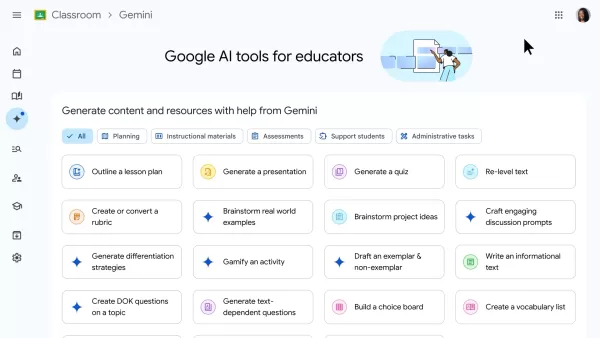 Google Expands NotebookLM AI Access to Students Under 18
Google has unveiled significant upgrades to its Classroom platform, introducing free Gemini AI tools for educators and expanding access to NotebookLM for students under 18—marking the first availability of these tools for younger users.Educators usin
Google Expands NotebookLM AI Access to Students Under 18
Google has unveiled significant upgrades to its Classroom platform, introducing free Gemini AI tools for educators and expanding access to NotebookLM for students under 18—marking the first availability of these tools for younger users.Educators usin
 US Pushes for Nvidia to Reduce AI Chip Sales to China
Recent reports from The New York Times and The Financial Times reveal that the Trump administration has mandated Nvidia and AMD allocate 15% of their AI chip sales revenue from China to federal coffers. This unprecedented arrangement reportedly follo
US Pushes for Nvidia to Reduce AI Chip Sales to China
Recent reports from The New York Times and The Financial Times reveal that the Trump administration has mandated Nvidia and AMD allocate 15% of their AI chip sales revenue from China to federal coffers. This unprecedented arrangement reportedly follo

